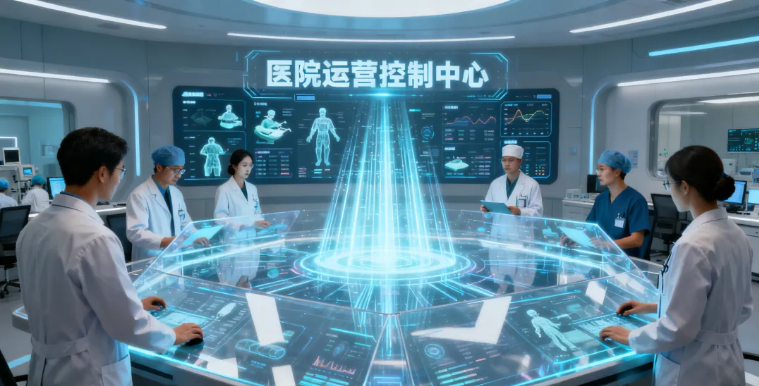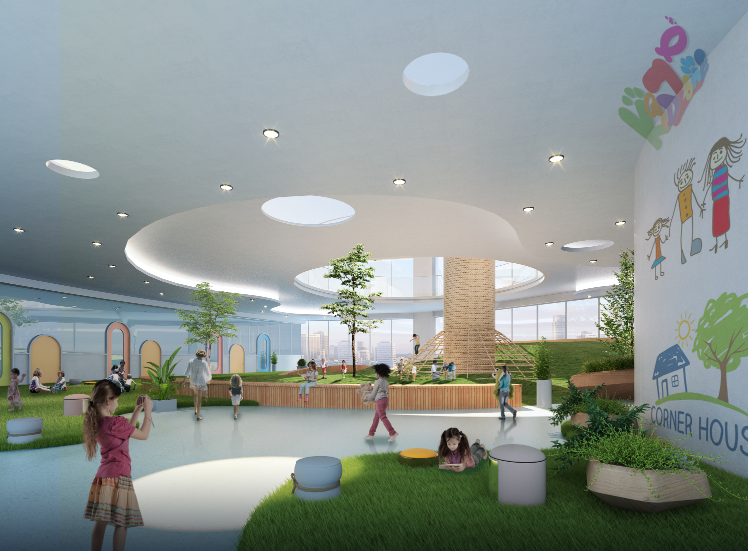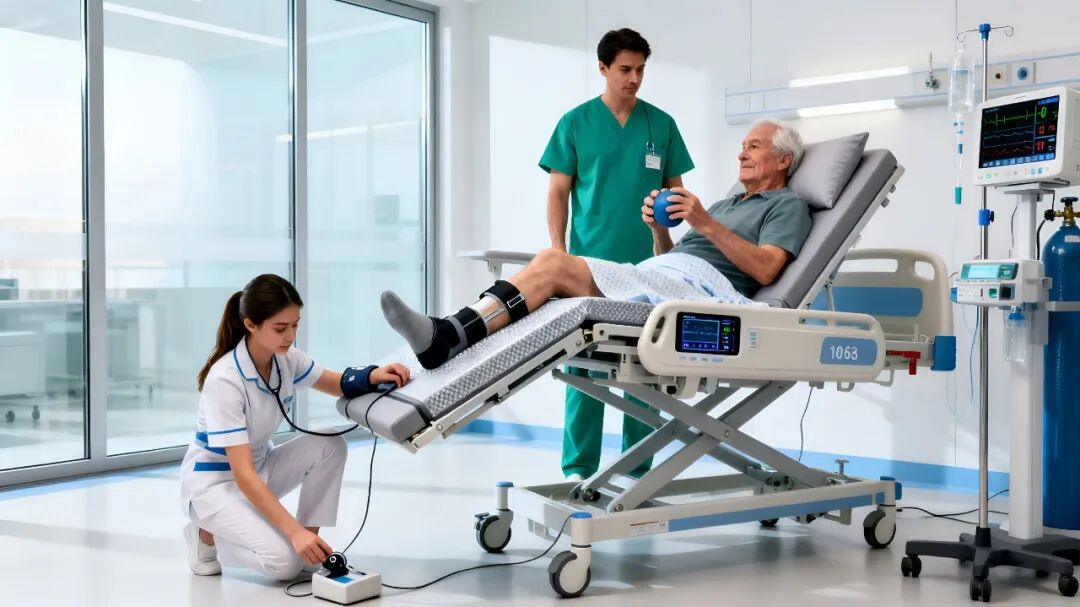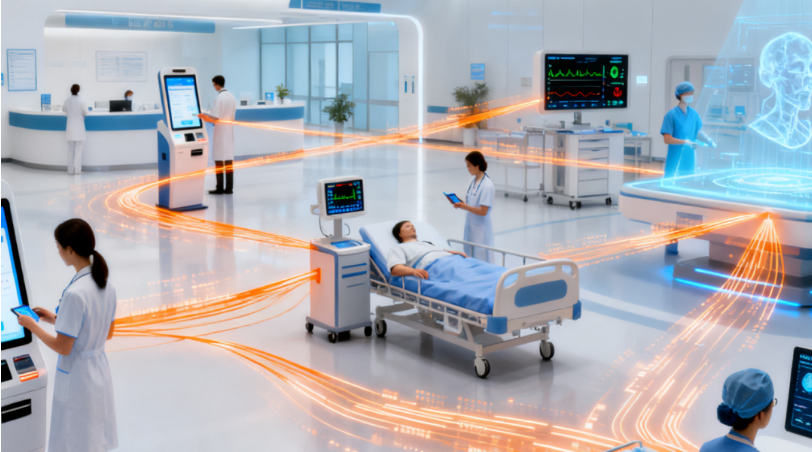Medical Bed Trends and Opportunities in China
The medical bed industry is undergoing a critical phase of comprehensive upgrade. Against this backdrop, the traditional competition model, which relies solely on product features and pricing, is increasingly inadequate to meet new market demands. For medical bed manufacturers, breaking through the constraints of the conventional hardware supplier role and actively transitioning into intelligent, highly customized system solutions providers is no longer merely an option for growth—it has become a strategic imperative to capture new market high ground and secure long-term competitive advantage.
Hospital Ward Upgrades Gain Momentum, Driving Demand for High-Quality Medical Beds
Ward renovation has become a strategic priority for medical institutions at all levels to enhance service quality and optimize resource allocation. Guided by national policies promoting high-quality development in the healthcare sector, ward upgrades are evolving beyond the simple replacement of equipment. They are now advancing toward comprehensive, systematic transformation—encompassing spatial reconfiguration, integration of smart equipment, data interoperability, and redesign of nursing workflows.
According to incomplete statistics based on public tender information, since the beginning of 2025, medical institutions across China have been actively promoting ward renovations and procuring various types of medical beds. Notable examples include:
April 1: Shanghai Pudong New Area People's Hospital allocated a budget of 6 million RMB to purchase multi-functional rescue beds and monitoring beds.
April 17: Yingkou Central Hospital issued a tender for the procurement of 600 nursing beds.
April 25: Shanghai Sixth People's Hospital launched a tender for 136 multi-functional beds to support early rehabilitation of critically ill patients, 31 electric rescue beds, and 303 standard hospital beds.
May 20: The First Affiliated Hospital of Guangxi Medical University secured a winning bid of nearly 5.19 million RMB for a batch of ICU electric beds, triple-crank central control beds, and electric nursing beds, among other equipment.
July 15: China Resources announced plans to replace 33,000 AI-powered physical therapy beds across its hospital network, establishing “model integrated care wards.” These will use digital platforms to enable full-cycle patient rehabilitation management, improve patient satisfaction and bed turnover rates, and reduce nursing labor costs by 15%.
September 10: Hefei Third People's Hospital initiated a clinical equipment procurement project as part of its ward renovation, which includes 300 patient beds with a budget of 2.367 million RMB. The bid submission deadline is set for September 30.
September 11: Wusu City People's Hospital in Xinjiang procured 260 patient beds and supporting facilities for its new ward zone.
In addition to the projects listed above, multiple hospitals in Zhejiang, Jiangsu, Shandong, Sichuan, and other regions have also successively released ward renovation and medical bed procurement plans. This reflects a nationwide emphasis on upgrading hardware facilities among healthcare institutions.
Overall, ward upgrade projects in China in 2025 are characterized by expanded scope, technological intelligence, and functional integration. From first-tier cities such as Beijing, Shanghai, Guangzhou, and Shenzhen to regional medical centers, and from general hospitals to specialized institutions, ward modernization is accelerating across the country. As more regions incorporate ward standards into hospital grading and performance evaluation systems, it is expected that such systematic renovation projects will further scale up in the second half of 2025 and into 2026.
Driven by Demand and Policy, the Smart Medical Bed Industry Embraces New Opportunities
As China's demographic structure rapidly ages, the population aged 60 and above is projected to reach 310 million by 2025, accounting for 22% of the total. With the scale of disabled and semi-disabled individuals continuing to expand, traditional hospital beds are increasingly inadequate to meet the growing need for precise, multi-functional care and rehabilitation. This is propelling the high-quality medical bed market into a phase of rapid development.
The General Office of the State Council's "Opinions on Further Promoting the High-Quality Development of the Medical Device Industry," issued in early 2024, explicitly encourages the development of smart medical bed systems integrated with IoT, AI diagnostics, and remote operation/maintenance capabilities. It also supports medical institutions in advancing holistic ward renovations and equipment upgrades. This policy not only provides clear innovation direction and institutional support for the industry but also reflects a national-level strategic response to the rigid demands of an aging society. By 2025, empowered by sustained policy support and urgent social needs, the smart medical bed industry is expected to further refine its technical standards and service ecosystem, achieving a transition from standalone product innovation to systematic rehabilitation care solutions.
Technological Innovation Expands the Functional Boundaries of Smart Medical Beds
The new generation of medical beds is rapidly evolving from traditional mechanical structures into highly integrated, intelligent systems. They widely incorporate advanced functions such as smart sensing, real-time vital signs monitoring, AI-based risk early warning, and remote operation and maintenance management, significantly enhancing the efficiency and quality of healthcare services.
At previous National Hospital Construction Conferences, several leading companies showcased their distinctive innovations:
Jiangsu Saikang introduced its flagship Z7z smart bed, which utilizes AI and information technology to enable real-time vital signs monitoring and seamless medical data interoperability.
Hebei Pukang leveraged artificial intelligence to develop a comfort assessment model, markedly improving the motion stability of electric medical beds and enhancing the patient experience.
Houfu Medical focused on innovating basic nursing functions, achieving precise bed weighing through optimized structural design. This enhancement improves measurement accuracy and upgrades nursing conditions in primary care settings.
The continuous advancement of smart medical beds is profoundly reshaping the boundaries and models of modern healthcare, providing solid support for building smart hospitals and realizing precision nursing.
Rising Department-Specific Needs Make Customized Solutions a Key Competitive Edge
Different clinical departments have distinct functional requirements for medical beds:
ICU: Requires posture adjustment, X-ray transparency, and emergency power supply.
Rehabilitation Medicine: Emphasizes backrest elevation, leg flexion, training assistance, and posture management.
Obstetrics & Gynecology: Focuses on maternal comfort and newborn safety protections.
Geriatrics: Prioritizes fall prevention, pressure sore (decubitus ulcer) prophylaxis, and activities of daily living (ADL) assistance.
A company's ability to provide highly compatible, scalable, and cross-departmental integrated solutions is increasingly becoming a key measure of its market competitiveness.
In summary, the medical bed market is undergoing a comprehensive transformation from traditional medical equipment to intelligent system solutions. Competition within the industry has evolved beyond individual product features to encompass all-around capabilities centered on intelligent integration, clinical precision matching, and ecosystem synergy. A company's competitiveness now depends on its ability to embed itself within the overall architecture of smart hospitals and deliver system solutions that cover full-scenario, end-to-end processes, and the entire patient lifecycle. Those enterprises that can accurately grasp clinical needs, provide intelligent system solutions, and demonstrate rapid response capabilities will gain a first-mover advantage in this market restructuring.
Spotlight on CHCC2026: High-Quality Medical Bed Solutions Zone
To precisely align with market demands and accelerate the clinical application of innovative technologies, CHCC 2026 will feature a dedicated "High-Quality Medical Bed Solutions Zone" within the S15 Ward Improvement Pavilion.
This zone will gather leading and innovative enterprises to collectively showcase a range of cutting-edge products and integrated solutions, including smart medical beds, rehabilitation & nursing beds, electric multifunctional beds, and anti-decubitus systems, among others.
CHCC 2026 will specially invite project owners (from infrastructure departments, procurement offices, and clinical department heads) of planned and under-construction hospitals nationwide to form professional visitor delegations. The zone aims to create a one-stop platform integrating product experience, technical exchange, and demand matching, assisting exhibitors in precisely connecting with target clients and propelling advanced nursing technologies from "conceptual showcases" to tangible "bedside implementation."
We cordially invite medical bed manufacturers and solution providers to actively participate and join us in pioneering the new ecosystem for smart ward construction.
Subscribe to our newsletter
Get updated news about CHCC by subscribing CHCC newsletter.
-
 Read moreCHCC Exhibitors 2025.10.27
Read moreCHCC Exhibitors 2025.10.27The Road to Resilient Healthcare: Mastering Hospital Operations
For operational excellence—"better care, greater efficiency, and lower costs".
-
 Read moreCHCC Exhibitors 2025.10.21
Read moreCHCC Exhibitors 2025.10.21The Showcase of CITIC Design for Innovative, Intelligent, and People-Oriented Healthcare Architecture at CHCC2026
CITIC Design, premium supplier in the sector of hospital construction, will join CHCC2026.









